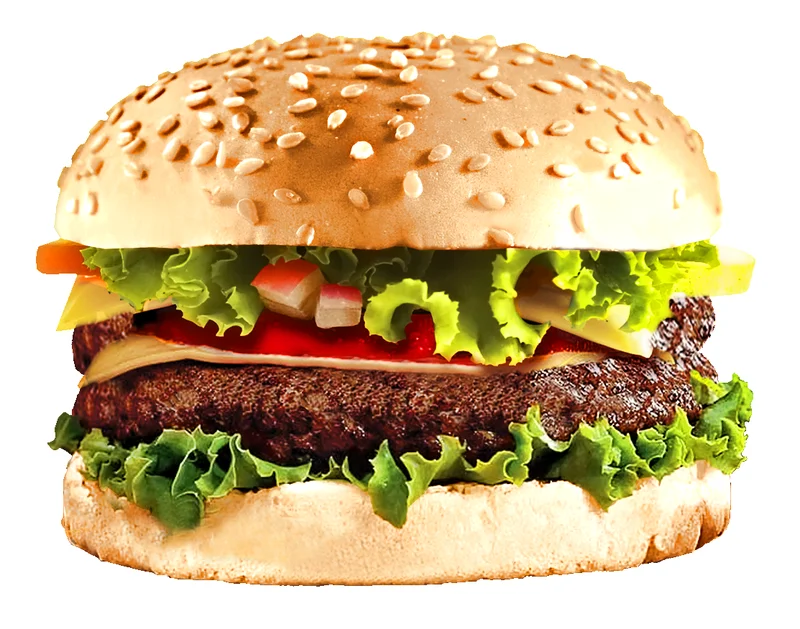The Burger Bubble Just Popped: Why Your Go-To Spot is Next on the Chopping Block
So, Wendy’s is closing another 300-or-so restaurants. The corporate suits are framing it as a bold move to "elevate the brand."
Give me a break.
This isn't elevating anything. This is the corporate equivalent of finding a crack in your wall and deciding the best solution is to bulldoze a few rooms. It’s a spreadsheet-driven bloodletting masquerading as a strategy, and we’ve all seen this movie before. The plot is always the same: things get tight, and the first thing to go isn't the executive bonus pool, but the jobs of people slinging Baconators in places the C-suite probably couldn't find on a map.
Interim CEO Ken Cook trotted out the same tired lines on an earnings call, talking about stores that are a "drag from a franchisee financial performance perspective." Let me translate that for you from PR-speak into English: "Some of our restaurants are in poorer neighborhoods, or are just old and run-down, and we'd rather kill them off than invest the cash to fix them."
It’s just lazy. No, lazy isn't the right word—it's cowardly. It’s easier to amputate than to heal. And who gets hurt? Not the investors. It’s the shift managers, the cooks, and the cashiers in those 240 to 360 locations who are about to get a pink slip right before the holidays.
The Gospel of "Brand Elevation"
Let's talk about this phrase, "elevate the brand." What does it actually mean? Does it mean better food? Faster service? Cleaner restaurants? Or does it just mean getting rid of the locations that don't fit a sterilized, Instagram-friendly image of what a Wendy’s should be? I’m betting on the latter.
I can picture one of these "drag" locations right now. The fluorescent lights hum a little too loud. One of the self-serve soda nozzles is perpetually sticky with dried Coke. The guy behind the counter is doing three jobs at once because management won't approve the hours for a full staff. These aren't problems you solve by putting a "CLOSED" sign on the door. These are problems you solve with investment and giving a damn.

This whole maneuver feels like a landlord who, instead of fixing a building's leaky pipes and cracked foundation, just evicts the tenants in the cheapest apartments to make the property's overall "performance" look better on paper. The building is still falling apart, but hey, the average rent per unit just went up. Success!
Are these "underperforming" stores all conveniently located in neighborhoods that corporate doesn't want to drive through? The company, offcourse, hasn't released a list of which of its 6,000 locations are getting the axe. Its a classic corporate move that creates a cloud of fear and uncertainty for thousands of employees, who now have to wonder if their store is next.
New York's Place on the Chopping Block
Wendy’s plans hundreds of restaurant closures. How many locations are in NY? With 229 locations in New York alone, you have to wonder how many are in the crosshairs. More than 40 of those are in New York City, where the cost of doing business is astronomical. Are they going to shutter a dozen locations in the five boroughs? Or will they target the older, smaller-town spots upstate that haven't seen a renovation since the 90s? We don't know, and that's the point. The ambiguity is the feature, not the bug.
This comes just a year after they already shuttered 140 locations. At what point do you stop cutting and start asking why so many of your restaurants are failing in the first place? Maybe, just maybe, the problem isn't the individual stores. Maybe the problem is a product that's gotten more expensive and a customer experience that's become increasingly detached and automated.
They want us to believe this is about 'brand health,' and maybe for a second you do, but then you realize this is just another cycle of corporate cannibalism. They'll close these stores, the stock will likely get a temporary bump, the executives will praise their own decisiveness, and the rest of us are just supposed to nod along...
Then again, maybe I’m the crazy one. Maybe a world with 300 fewer places to get a Frosty is actually a net positive.
This Ain't About the Burgers
Let's be real. This has nothing to do with "fixing" Wendy's or making the customer experience better. This is the cold, hard math of late-stage capitalism. It’s about appeasing Wall Street by juicing the numbers. You close your least profitable locations, and suddenly your average profit-per-store metric looks fantastic. It’s a magic trick performed with people’s livelihoods. The quality of the food won’t get better. The service won’t improve. The company will just be a slightly smaller, temporarily more profitable version of its old self, until the next round of cuts is needed. It’s a race to the bottom, and we're all just along for the greasy ride.
-

Warren Buffett's OXY Stock Play: The Latest Drama, Buffett's Angle, and Why You Shouldn't Believe the Hype
Solet'sgetthisstraight.Occide...
-

The Business of Plasma Donation: How the Process Works and Who the Key Players Are
Theterm"plasma"suffersfromas...
-

The Great Up-Leveling: What's Happening Now and How We Step Up
Haveyoueverfeltlikeyou'redri...
-

NJ's ANCHOR Program: A Blueprint for Tax Relief, Your 2024 Payment, and What Comes Next
NewJersey'sANCHORProgramIsn't...
-

The Future of Auto Parts: How to Find Any Part Instantly and What Comes Next
Walkintoany`autoparts`store—a...
- Search
- Recently Published
-
- Stock Market 'News': Today's US Market Spin and the 'Live' Updates
- IRS Direct Deposit Relief Payments: What This Breakthrough Means for Your Financial Prosperity
- Bilbao: What the Data Reveals
- Outback Steakhouse Closures: The Financials Behind the Shutdown and Which Locations Are Gone
- The Burger Bubble Just Popped: Why Your Go-To Spot is Next on the Chopping Block
- The Bio-Hacked Human: What the New Science of the Core Reveals About Our Future
- Ore: What It Is and Why It Matters
- Firo: What is it?
- Avelo Airlines: FAA Cuts and the Lakeland Linder Opportunity
- Rocket Launch Today: What Happened and the Mystery Fireball
- Tag list
-
- Blockchain (11)
- Decentralization (5)
- Smart Contracts (4)
- Cryptocurrency (26)
- DeFi (5)
- Bitcoin (29)
- Trump (5)
- Ethereum (8)
- Pudgy Penguins (5)
- NFT (5)
- Solana (5)
- cryptocurrency (6)
- XRP (3)
- Airdrop (3)
- MicroStrategy (3)
- Stablecoin (3)
- Digital Assets (3)
- PENGU (3)
- Plasma (5)
- Zcash (6)
- Aster (4)
- investment advisor (4)
- crypto exchange binance (3)
- bitcoin price (3)
- SX Network (3)
